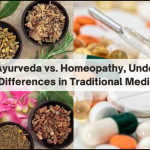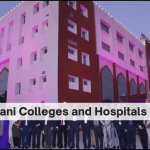
Pursuing a medical degree is a significant decision that shapes a student’s future career. In India, medical aspirants often face the difficulty of choosing between private and government medical colleges. While both offer quality education, they differ in aspects like fees, facilities, infrastructure, and career opportunities. Understanding these differences can help students make an informed decision.
1. Admission Process and Competition
The admission process for both government and private medical colleges is primarily based on the National Eligibility cum Entrance Test (NEET). However, government colleges have limited seats and high cut-offs, making them highly competitive. Private colleges, on the other hand, have more seats available but may have higher fee structures for management quota admissions.
2. Cost of Education
One of the most significant differences is the cost of education.
| Factor | Government Medical Colleges | Private Medical Colleges |
|---|---|---|
| Tuition Fees | ₹10,000 – ₹1,00,000 per year | ₹10,00,000 – ₹25,00,000 per year |
| Additional Costs | Minimal (subsidized hostel & food) | Higher (hostel, miscellaneous fees) |
| Scholarships | Available for meritorious and reserved category students | Limited or merit-based |
Government medical colleges are subsidized by the government, making them affordable, whereas private colleges have a much higher fee structure.
3. Infrastructure and Facilities
Private medical colleges often have modern infrastructure with state-of-the-art equipment, advanced laboratories, and well-maintained hospital facilities. Government medical colleges, although well-equipped, sometimes lack advanced technology due to budget constraints. However, government hospitals affiliated with these colleges handle a large number of patients, offering students hands-on experience with diverse cases.
4. Quality of Education and Faculty
Both government and private medical colleges maintain high educational standards, but there are differences:
- Government Colleges: Have experienced faculty members who are often pioneers in their fields. They also attract some of the brightest students, leading to a competitive academic environment.
- Private Colleges: Some private institutions have excellent faculty, but others may struggle with retaining highly qualified professors due to budget limitations.
5. Clinical Exposure and Practical Experience
Government medical colleges generally offer better clinical exposure due to their association with large government hospitals. These hospitals cater to a vast number of patients daily, allowing students to deal with real-life cases, a variety of diseases, and complex treatments.
Private colleges may have tie-ups with hospitals, but the patient inflow is often lower, which may limit practical exposure compared to government institutions.
6. Placement and Career Opportunities
| Factor | Government Medical Colleges | Private Medical Colleges |
| Job Opportunities | Higher, as government jobs prioritize government college graduates | Limited unless highly reputed |
| Internship Experience | Government hospitals with large patient influx | May lack diverse patient cases |
| Research & Specialization | More opportunities for research and post-graduate programs | Varies by institution |
Graduates from government medical colleges are often preferred for government jobs and postgraduate programs due to their strong academic and practical background. Private college graduates may need to work harder to secure prestigious positions unless they graduate from top-tier private medical institutions.
7. Social Recognition and Reputation
Government medical colleges, being part of the public healthcare system, have an established reputation in India. Their graduates are often perceived as more competent due to strict training and patient exposure. Private colleges, although improving in reputation, sometimes struggle with credibility, especially if they are newer institutions.
8. Competition and Student Diversity
Government medical colleges admit the top-ranking students due to inflexible cut-offs, creating a highly competitive environment. This promotes learning and skill development. Private colleges, however, may admit students through management quotas, leading to varied levels of competency among students.
9. Career Growth and Further Studies
- Government Medical Colleges: Graduates have better chances of securing government jobs, postgraduate admissions, and international study opportunities due to their strong academic background.
- Private Medical Colleges: Students may face tougher competition for PG courses unless they come from prestigious private institutions.









